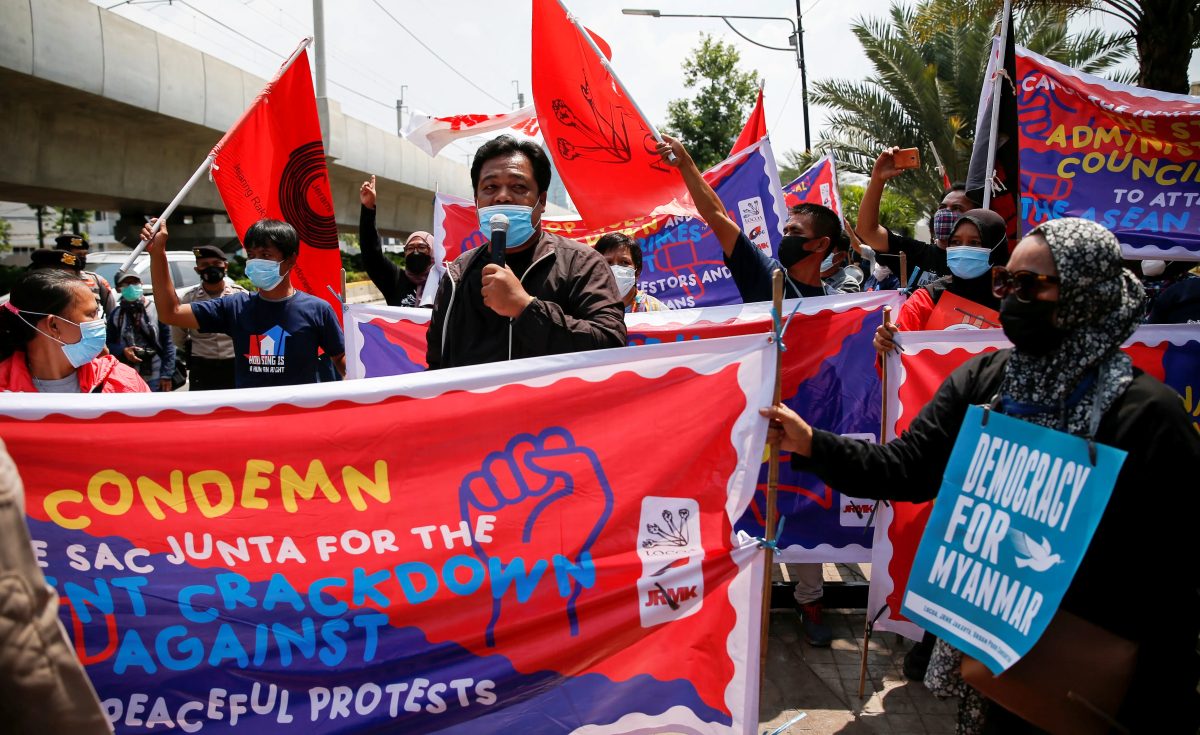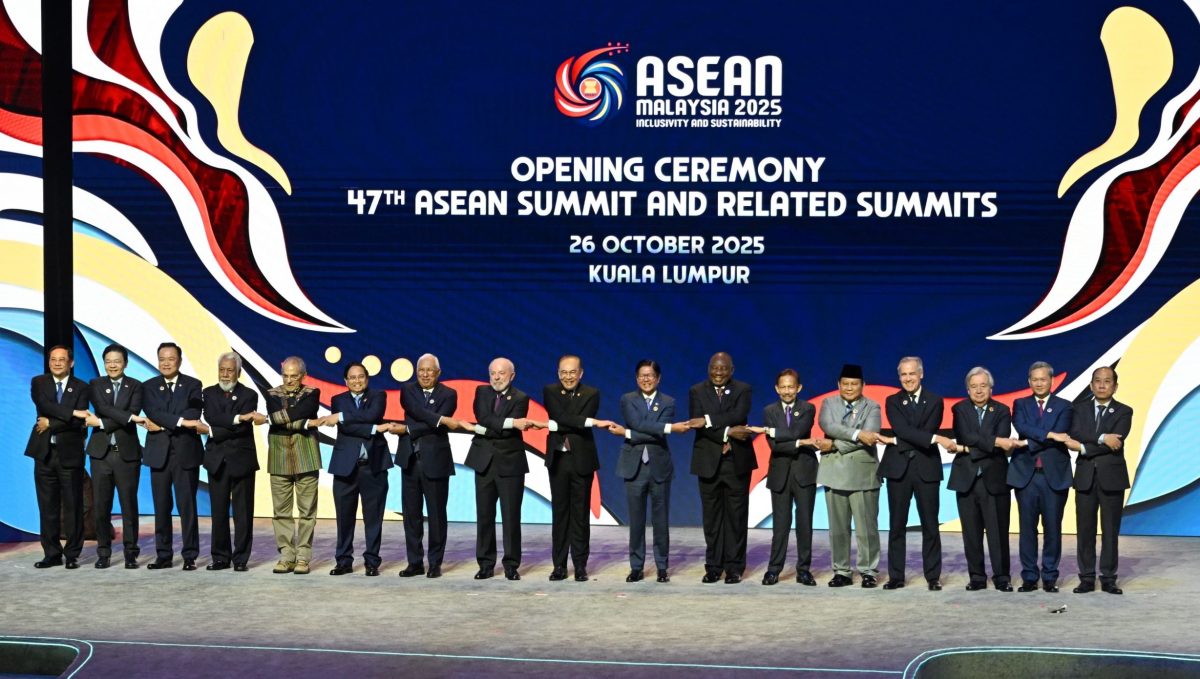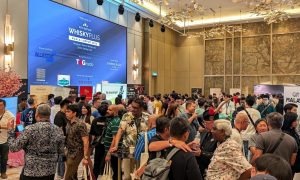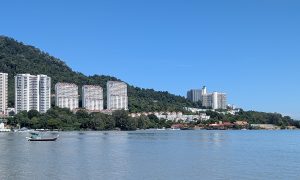As the Association of Southeast Asian Nations (ASEAN) wraps up its summit in Kuala Lumpur, its ongoing failure to act decisively on Myanmar is raising fresh doubts about whether the bloc can rise beyond being a platform for diplomacy to become a genuine actor for regional stability.
The Association of Southeast Asian Nations was founded in 1967 on optimism and pragmatism. Born during the Cold War as a bulwark against communism, the bloc aimed to promote peace, stability, and cooperation across a diverse region. Over the decades, it evolved into a forum for economic integration, diplomacy, and conflict prevention, gaining international respect for turning one of the world’s most turbulent regions into a relative haven of stability.
Today, however, that legacy is under severe strain.
When leaders gathered in Kuala Lumpur for the 47th ASEAN Summit, the symbolism was clear. The region’s top diplomats and heads of government assembled under the theme of ‘Inclusivity and Sustainability,’ projecting unity and purpose. But for many observers, the rhetoric rang hollow. The shadow of Myanmar loomed over every discussion, serving as a reminder that ASEAN’s greatest weakness lies not in external threats, but in its inability to act against the atrocities unfolding within one of its own member states.
“People who criticize ASEAN for its inability to get its house in order, they are absolutely right,” said Professor Joseph Liow, Dean of the Lee Kuan Yew School of Public Policy in Singapore, in remarks to the BBC. “So unless ASEAN can handle more pressing issues, its relevance will always get called into question… And really the fundamental question for ASEAN is, ‘At what cost unity?'”

A BROKEN CONSENSUS
Four years have passed since Myanmar’s military brazenly seized power from the elected government, plunging the country into chaos. Thousands have been killed, millions displaced, and vast swathes of the country remain in open conflict. In 2021, ASEAN responded with what became known as the Five-Point Consensus, a plan that called for an immediate cessation of violence, constructive dialogue among all parties, humanitarian assistance, and a special envoy to facilitate peace efforts.
It was meant to demonstrate ASEAN’s relevance in a crisis that directly challenged its credibility. Instead, it accomplished little beyond exposing the bloc’s impotence.
In Myanmar, the junta ignored every aspect of the agreement, continuing its campaign of violence while attending ASEAN meetings by proxy or being partially excluded. The bloc’s leaders continued to issue statements, urging restraint and dialogue, but little else. No sanctions were imposed, no collective action was taken, and no serious consequences followed.
For many within and outside the region, this has cemented ASEAN’s image as a body that talks endlessly but acts rarely. The term ‘toothless tiger,’ once used sparingly, now appears in countless editorials, policy papers, and diplomatic conversations. A recent article in the BBC took ASEAN to task for its short list of actual accomplishments and noted that many are questioning the bloc’s relevance.
The problem lies at the heart of ASEAN’s identity. The organization’s founding principle of non-interference was designed to protect fragile sovereignty and prevent external meddling. It worked well in maintaining peace among members, but it has unfortunately become a straitjacket in times of crisis.
In a real-world manifestation of the idiom, “Too many cooks spoil the broth,” decisions within ASEAN are made by consensus, which means that even a single dissenting voice can block progress. This system allows weaker or more authoritarian states to resist measures that might set uncomfortable precedents for their own hardline domestic governance.
Supporters of the non-interference principle argue that it preserves unity by preventing open rifts between member states. Yet in practice, it often prevents any meaningful steps from being enacted. As one regional analyst put it recently, ASEAN has mistaken silence for solidarity.
The bloc’s leadership insists that ‘quiet diplomacy’ remains effective, pointing to behind-the-scenes negotiations and humanitarian aid deliveries through neutral channels. But for millions of Myanmar’s civilians enduring daily airstrikes, food shortages, and displacement, those quiet gestures offer little comfort. As the Council on Foreign Relations framed it in August 2022, ASEAN’s inaction with regard to Myanmar’s plight is nothing less than a “complete failure.”

MALAYSIA’S CHALLENGE AS CHAIR
With ASEAN’s 47th summit under Malaysia’s chairmanship this year, Prime Minister Anwar Ibrahim faces an uphill task. To his credit, he has called for ASEAN to take a stronger moral stance on Myanmar, while still upholding its core principles. It is a delicate balance to strike, and one that risks alienating members who prefer the status quo. It is also particularly frustrating to critics who note Malaysia’s vociferous advocacy for Palestinians, yet do nothing for their own aggrieved neighbours, to say nothing of Myanmar’s minority Muslim Rohingya community, whose refugees have been repeatedly shunned by Malaysia.
That said, Malaysia has historically been one of the bloc’s more vocal champions for reform, often taking a pragmatic approach to regional diplomacy. During this year’s meetings, Kuala Lumpur sought to revive momentum for implementing the Five-Point Consensus, encouraging humanitarian aid coordination and political dialogue. Yet as always, however, the absence of any meaningful enforcement mechanisms leaves these initiatives more symbolic than substantive.
According to geopolitical observers, Anwar’s credibility as chair rests largely on his ability to reconcile the competing priorities of sovereignty, solidarity, and accountability. For now, his government has focused on building partnerships with ASEAN’s external dialogue partners — such as Japan, the United States, and the European Union — to encourage a stronger regional stance. But the question remains: can ASEAN reform itself from within, or will it rely indefinitely on outside powers to lend it direction?
A HISTORY OF INACTION, BRIEF GLIMPSES OF SUCCESS
Myanmar’s civil war is only the latest example of ASEAN’s inability (or unwillingness) to address political crises within its borders. For years, the bloc has struggled to respond to recurring issues such as the South China Sea disputes, environmental degradation from transboundary haze, and the growing influence of global powers vying for dominance in the region, which is unquestionably growing in prominence and importance.
In 2015, when hundreds of Rohingya refugees desperately fled Myanmar’s Rakhine State by boat, ASEAN nations were reluctant to respond collectively, citing sovereignty concerns. More recently, environmental crises like Indonesia’s recurring forest fires and transboundary haze nightmares have elicited little more than pledges of cooperation and expressions of concern.
Critic say these repeating patterns reveal a structural problem: ASEAN’s very design prioritizes consensus over accountability. Its Charter, adopted in 2008, formalized this approach but failed to equip the bloc with tools for crisis management. Unlike the European Union or the African Union, ASEAN has no mechanism for sanctions, suspension, or collective intervention. The result is a regional body that excels in diplomacy, but falls flat in enforcement.
To its credit, however, ASEAN has occasionally demonstrated quiet effectiveness. Its facilitation of peace talks in Cambodia in the 1980s, and later in the Philippines’ southern conflict, are often cited as early triumphs of regional diplomacy. More recently, the admission of Timor-Leste as ASEAN’s 11th member this year was hailed as a symbol of inclusivity and progress, effectively expanding the bloc’s reach to cover all of Southeast Asia. Malaysia and its prime minister also deserve credit for brokering a peace deal between Thailand and Cambodia after their latest flare-up, a ceasefire and peace deal likely hastened by the U.S. threat of crushing economic penalties.
Yet these achievements are overshadowed by ASEAN’s inability to address crises within its own ranks. The growing frustration among member states, civil society, and international observers suggests that ASEAN’s credibility will continue to erode unless it evolves.

THE ROAD AHEAD
If ASEAN is to remain relevant, experts say that reform is imperative. Analysts argue for a shift from rigid consensus toward qualified majority decision-making on critical issues. Others propose the creation of a permanent conflict-resolution mechanism or a stronger Secretariat empowered to act independently.
There is also growing support for adopting a ‘two-track’ approach, in which willing member states can act jointly on urgent issues without requiring unanimous consent. Such flexibility could allow ASEAN to respond more swiftly to humanitarian and security crises while preserving its underlying commitment to regional unity.
Still, political will remains the greatest obstacle. Member governments are wary of setting precedents that could one day turn against them. As long as sovereignty remains sacred, ASEAN’s evolution from a diplomatic forum into an effective regional actor will remain incomplete, and it doesn’t seem that ASEAN will emulate much of the EU’s relative strengths and successes anytime soon.
At this year’s summit, the flowery rhetoric of inclusivity and cooperation was on full display. Yet beneath the photo sessions and communiqués, the question lingers: can ASEAN truly act when it matters most? Until it finds the courage to confront that question, the ‘toothless tiger’ will lack any real bite, continuing to merely roar softly while others decide its fate — and that of its member states.
Sources: BBC, The Economist, Council on Foreign Relations, Lowy Institute, Human Rights Watch, Reporting ASEAN

















